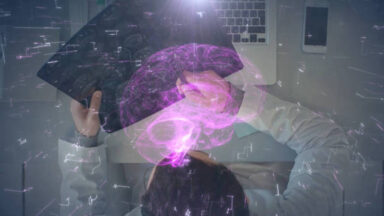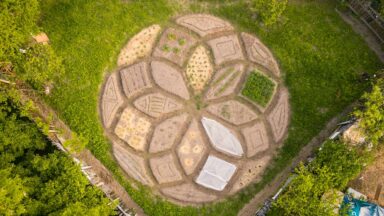Researchers Find Way to Interact With People in Lucid Dreams

The mysterious world of dreams has thus far only been fully accessible to one person—the dreamer... until now. With a recent groundbreaking study, a new age of dream research has just begun.
The lucid dream is a state of awareness that you’re dreaming while possibly having some control over what happens within it. It’s estimated that some 50 percent of people have had a lucid dream, especially in childhood.
Scientists have been studying this phenomenon for decades but haven’t been able to adequately explain it because a person’s ability to recount their dreams upon waking is often unreliable. But recently, scientists have made a breakthrough by showing that people can both comprehend questions and provide answers to them, all while dreaming.
A team of international researchers studied 36 people with the goal of finding a way to communicate with them while they were dreaming. The results were groundbreaking.
Charlie Morley is a dream researcher who teaches people how to lucid dream.
“Up to this point, there’s been no way to directly communicate to the lucid dreamer while they’re in the lucid dream,” Morley said. “You can give them instructions before, you can speak to them afterwards, but while they’re in that internal virtual reality simulation of their own mind, there’s a blackout in comms. The brilliant thing about this new study is that blackout was broken through, they could actually communicate to the lucid dreamer while they were inside the lucid dream.”
“What they discovered was, while you’re in a lucid dream you can actually direct your physical eyes at will. So, using a form of literal morse code flicking the eyes left, right, up, down to indicate certain responses, they were able to communicate with the dreamer while they were still asleep. How did it enter the dream? Three main different ways, one person said it came through a car radio in the dream, suddenly the radio station changed and they could hear the voice of the scientist. Another person said it was like the voice of god, it just came down from the sky. And another person said it was like a narrator in a film, they would then reply ‘yes, I can hear you,’ by doing two eye flicks to the left or whatever code they had predecided to indicate ‘yes.'”
Out of 158 trials, participants were able to give correct answers about 18% of the time—a statistically significant result. The validity of the results was strengthened by the fact that there were four separate teams of researchers in four different countries, all using slightly different techniques and getting very similar results.
Watch more:
Woman Missing Large Part of Brain Ranks 98th Percentile in Speech

A recent study sheds light on the remarkable case of a woman who grew up without a key part of her brain and was barely affected by it.
In the endless search to understand the workings of the human mind, scientists take special interest in cases of the most unique brains. The most recent and fascinating is that of a woman known as EG (to protect her privacy.)
Now in her fifties, EG first learned her brain was atypical in her twenties when she had it scanned for an unrelated reason. She was told then that she had been missing her left temporal lobe from infancy, which was most likely the result of an early stroke. This part of the brain is thought to be involved with language processing, which makes EG’s story so extraordinary.
Despite being repeatedly told by doctors that she should have major cognitive deficits and neurological issues, EG has a graduate degree, has enjoyed an impressive career, and speaks Russian as a second language.
Several years ago, EG met Dr. Evelina Fedorenko, a cognitive neuroscientist at M.I.T. who studies language. Fedorenko was immediately fascinated by EG’s case and conducted a number of studies, the first of which was recently published in the journal Psychologia.




































